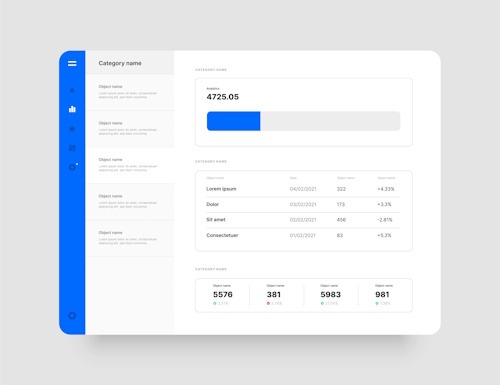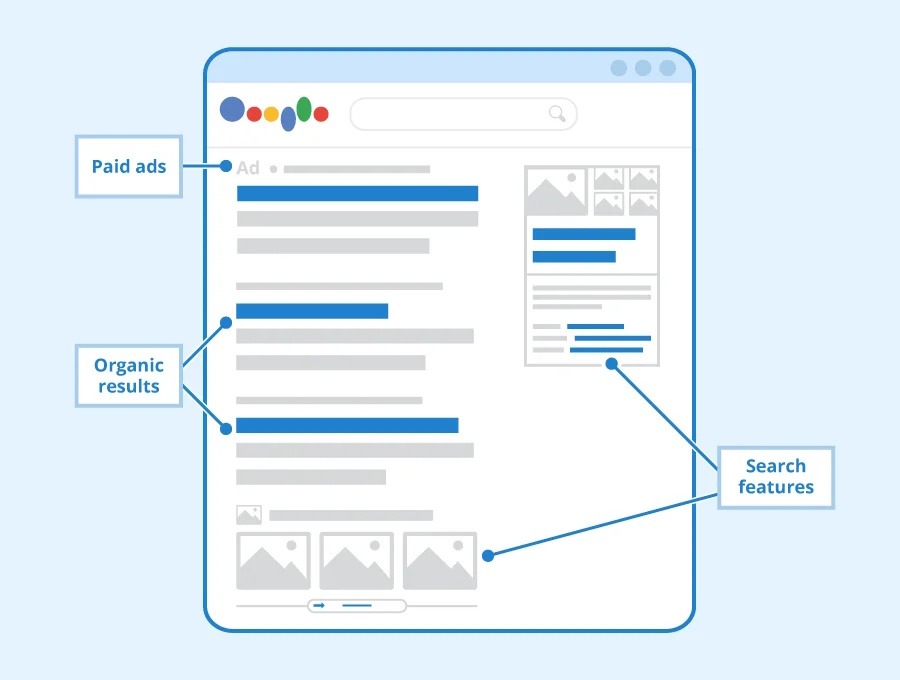Getting your app noticed in today’s digital marketplace? Honestly, it’s like playing a game where everyone else got the rules two weeks before you did. With millions of apps vying for attention, small and midsize businesses face an uphill battle without the luxury of enterprise-level marketing budgets. While the big players can throw cash at the problem like confetti, SMBs need to be smarter, scrappier, and more strategic with their app store SEO (or ASO).
Apple’s App Store and Google Play have the same general purpose but entirely different shopping experiences. Apple’s ecosystem might have fewer shoppers, but they’re ready to spend, while Google Play is the land of volume with Android’s massive global reach. Knowing these differences isn’t just good trivia, it’s essential for focusing your limited ASO resources where they’ll actually work.
Also, tracking your app store search results is essential for understanding visibility. Look beyond just rankings to examine which search terms actually drive downloads. Sometimes the keywords you rank for aren’t the ones converting to installs, which is like having a billboard in the desert — technically visible but practically useless.
Why traditional ASO advice falls short for SMBs, and what works
Most ASO guides are written for large companies, recommending premium tools and resource-intensive strategies that aren’t realistic for smaller teams. The truth is that you don’t need to match the ASO spending of industry giants to see significant results, you just need to be smarter about your approach.
For instance, SMBs should implement a phased investment strategy, starting with keyword-optimized titles and descriptions, high-quality screenshots, and basic review management before gradually expanding efforts. Leveraging free and low-cost alternatives to premium tools, such as built-in analytics, free keyword research resources, and Canva templates can deliver most of the functionality without the expense.

Also, you should focus on high-impact ASO elements like app titles, the first three screenshots, review management, and a small set of highly relevant keywords. Instead of competing for broad search terms, you should target specific niches where you can realistically rank well.
The mobile apps landscape is super competitive, with over 2 million apps on the Apple App Store and 3.5 million on Google Play. Standing out requires more than just functionality, your app needs to make a strong first impression to attract potential users who typically spend less than 7 seconds deciding whether to download.
Let’s dive into the specific methods of creatively increasing your app store ranking without outspending the big guys.
Start with a phased investment strategy
As a company with limited resources, you need to become an expert at using things in the right places. Instead of trying to optimize everything at once, prioritize your ASO investments based on your current business stage:
Foundation Phase (Minimal Resources): At this stage, you want to focus on keyword-optimized titles and descriptions. You need to appear in popular search ranking algorithms to start to get noticed. Then, focus on grabbing the attention of users; create 3-4 eye-catching screenshots highlighting core features. Implement basic review management (you don’t want to lead with a bunch of bad reviews) and keep these basics in play at all times; it’ll take you about 5-10 hours per month.
Growth Phase (Moderate Resources): At this stage, you’ve established a foothold, and you’re ready to expand. Now, start to A/B test your screenshots and descriptions to find the ones that capture even a bit more traffic. Record an app preview video (Canva and AI are great tools for this) and start to improve your keywords. You know the basics, but are there any other terms you can rank for? All of this will tack on an additional 12-15 hours per month.
Search performance metrics should become your new best friend during the Growth Phase. Beyond basic ranking data, dive into how users interact with your app listing after finding it through search. Are certain search terms bringing users who actually stick around and use your app? Or are you getting drive-by downloads from people who delete your app faster than a bad blind date? This performance data helps refine your keyword strategy to attract quality users, not just quantity.

Your conversion rate, the percentage of page visitors who actually download your app, is arguably more important than raw traffic numbers. Even a 1% improvement in conversion can significantly impact growth. Pay attention to elements that influence conversion: compelling screenshots, clear value propositions, and positive reviews prominently displayed.
As your app grows, you can gradually expand your app store SEO efforts rather than overextending your resources from day one. If you want to increase your app store ranking, steadily moving the needle is the way. You don’t want to be a flash in the pan.
Leverage free and low-cost tools
You don’t need enterprise-level subscriptions to conduct effective ASO. Improving app store search rankings is more a matter of ingenuity than investment, at least where money is concerned. Consider alternatives like:
- Built-in analytics from App Store Connect and Google Play Console. These give you great data for free.
- Free keyword research tools like Keyword Tool’s basic version. Again, you don’t have to subscribe to get a great handle on what people are searching for online.
- Professional screenshots with Canva’s free templates. These are the ultimate in-no-code graphic design solutions, and with even the slightest bit of capacity (forget talent), you can make something look great.
- Google Sheets dashboard to track performance. It’s simple, it’s free, and it even works with macros, in other words, it’s more than capable of tracking app store SEO metrics, making charts, and giving you the overall view of your ASO strategy in action.
App analytics isn’t just a fancy term for counting downloads. It’s about connecting the dots between user behavior and your ASO strategy. Even with limited resources, you can set up proper attribution tracking to understand which ASO efforts actually drive quality installations.
Are users who find you through certain keywords more likely to make in-app purchases? Do seasonal search trends affect your conversion rates? Without good analytics, you’re basically throwing spaghetti at the wall and hoping something sticks, which is messy and inefficient.
If you’re looking for a great place to start, these options deliver 80% of the functionality of premium tools at a fraction of the cost, or completely free.
Focus on high-impact ASO elements
As every small business owner knows, when resources are limited you concentrate on the elements with the biggest return. When looking to increase app store ranking, that translates to honing in on:
- App Title & Subtitle: These carry the most weight for search algorithms.
- First Three Screenshots: Most users decide based on these alone.
- Primary Keywords: Focus on 5-10 highly relevant terms rather than trying to rank for everything.
- Review Management: Respond to negative reviews quickly to improve ratings.
Every positive review is worth its weight in digital gold. Studies show that potential users trust other users far more than they trust your marketing copy. Actively encourage satisfied customers to leave a positive review by implementing smart in-app prompts that appear after successful interactions. Even better, a thoughtful response to a positive review shows potential users that you’re engaged and committed to your app community.
Remember the 80/20 rule, otherwise known as the Pareto Principle: 80% of your outcomes come from 20% of your inputs. When those 20% inputs are the “vital few” (like the ones above), you can expect to see 80%-level success. The rest is just pruning and perfecting from there.
Build ASO into your existing workflow
We know that in a small business there’s already more work than you can currently manage. So how can we possibly ask you to fit in more? For small teams already wearing multiple hats, integrate ASO tasks into your current processes:
- Update keywords during regular app updates.
- Have customer support collect user language for keyword research.
- Use existing marketing copy as a foundation for app descriptions.
- Schedule monthly 2-hour ASO review sessions.
Have you heard of habit stacking? It’s the art of tacking new habits onto the backs of old ones, saving yourself the work of incorporating them; making room for them in your schedule, remembering to do them, etc. Applying this principle to your new App Store Optimization tasks will help you actually get them done — while wondering how you did it.
Compete through specificity and agility, not volume
Instead of competing head-to-head with enterprise apps for broad search terms, target specific niche keywords where you can realistically rank well. A fitness app from a small studio might never rank for “fitness tracker” but could dominate more specific terms like “strength training log” or “bodyweight workout planner.”
It’s the David and Goliath fight all over again. You may not be able to meet Goliath on his terms, but on yours, so you can land a strategic shot and come out ahead.
Remember that your small size comes with the key advantage of agility. While large companies require multiple approvals for store listing changes, you can quickly adapt to emerging trends, seasonal opportunities, and user feedback. Use this flexibility to continually refine your ASO strategy based on real performance data in real time. See if it doesn’t improve your app store search ranking from there.
Remember: ASO is a marathon, not a sprint
Effective app store SEO requires consistency and patience. Start with these focused, resource-efficient strategies, measure your results, and gradually expand your efforts as your app grows. Even with limited resources, smart ASO can dramatically improve your app’s visibility and conversion rates, driving sustainable growth without unsustainable spending.
By focusing on these SMB-specific approaches to App Store Optimization, you can compete effectively in the app marketplace while respecting the realities of your available resources.








